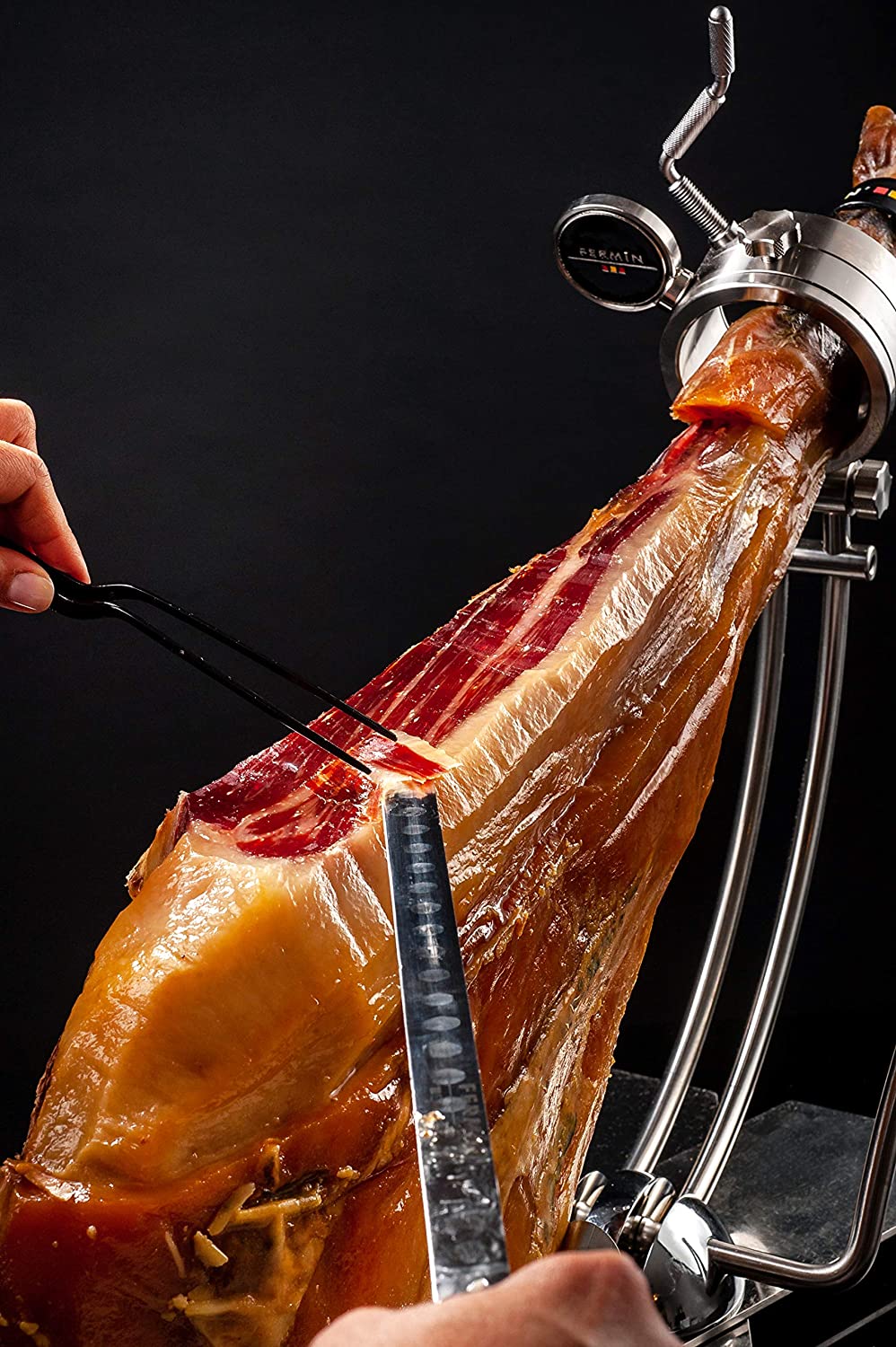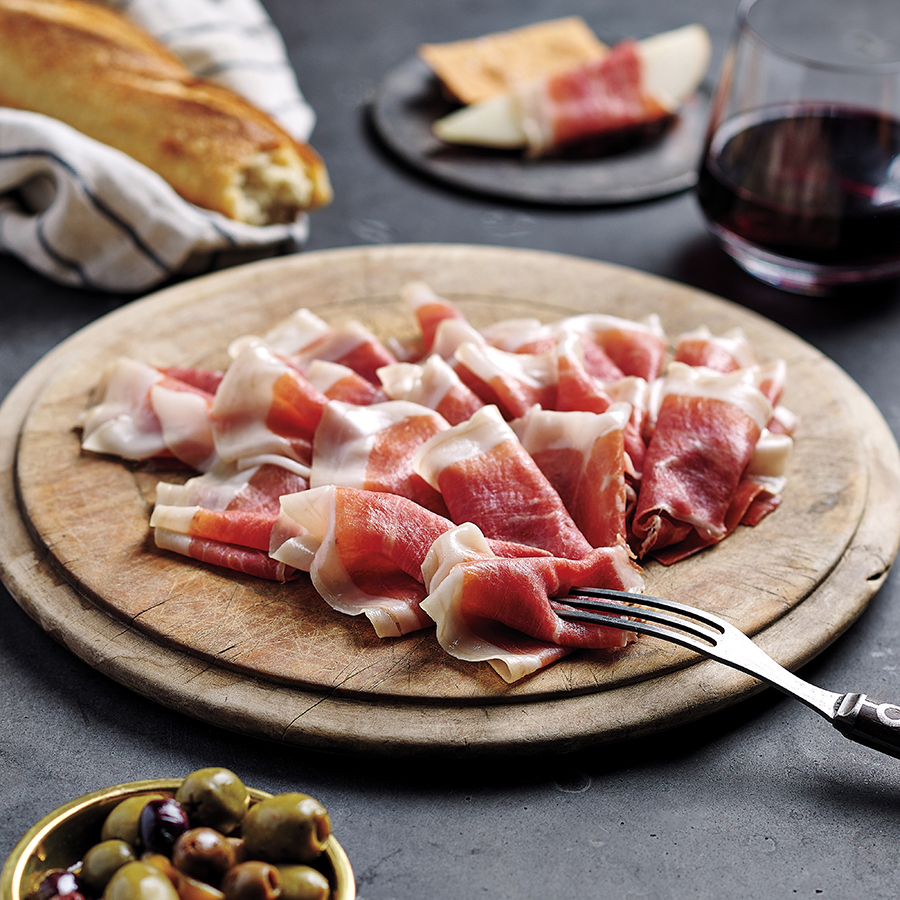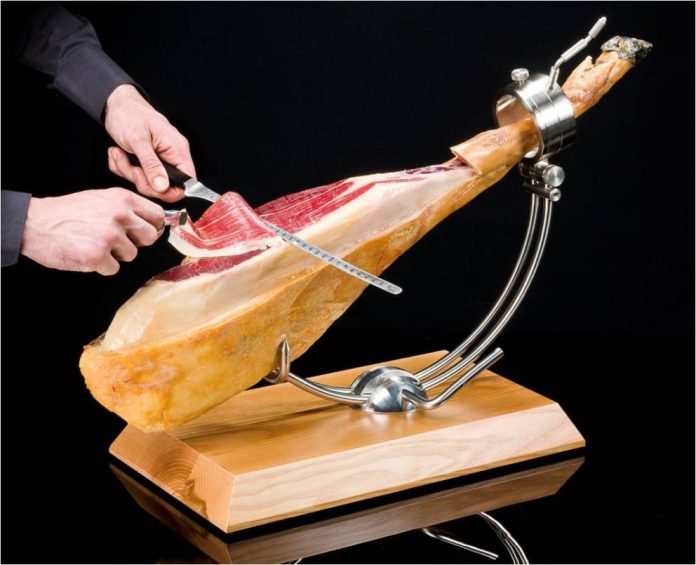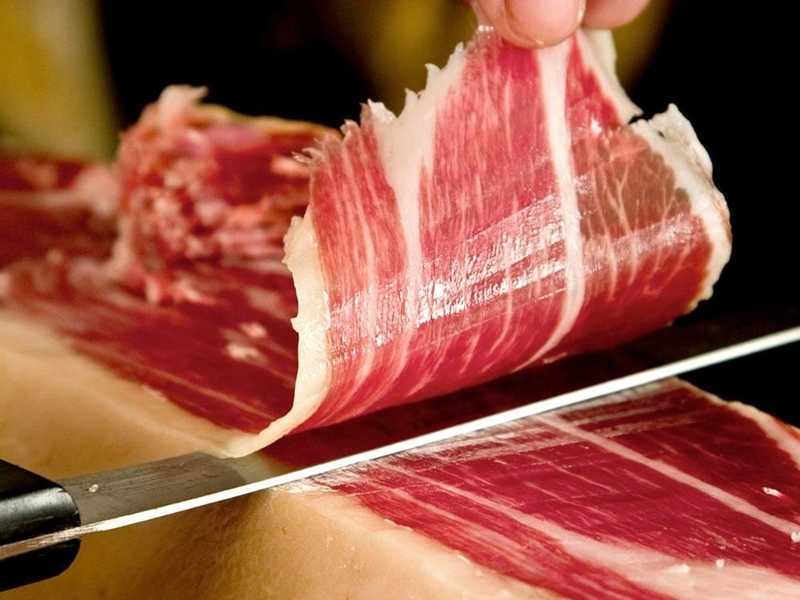Until recently, Iberico Ham was considered a delicacy, only available in Spain or by mail order. It has now found its way into some supermarkets and delicatessens in other places around the world. Felicity Lawrence, in her book Eat Your Heart Out (Penguin Books) claims that Iberico Ham is the best she has ever tasted, and cookery legend Delia Smith enthuses about it in her recent promotion for Waitrose stores in the UK. But what exactly is Iberico Ham and why is it so special?
Currently selling in the UK for around £6.25 per 100g, it is something that is not perhaps suitable for every day eating, but is definitely worth buying as an aromatic and tasty treat for a special picnic, party or dinner.
What is Iberico Ham and Where Does it Come From
Iberico Ham is made from pigs that live in the acorn forests (called la dehesa) in South and South West Spain. They feed predominantly on a diet of herbs, roots, cereals and of course the acorns that naturally fall to the ground in these areas. For the best quality ham, the pigs’ diets can be restricted in the last months to acorns only to intensify the nutty taste of the ruby-coloured meat. This procedure results in the most expensive ham.

After slaughter, the hams are cured and left to mature for anything from 12 months to 36 months. They are then sold – still predominantly in Spain – where the ham is served, thinly sliced, with cheeses and wine.
What is Special About Iberico Ham and Why is it so Expensive
Firstly, real Iberico Ham can only be produced using Iberian Pigs, often referred to as “Pata Negra” (black feet) due to the dark colour of their trotters compared to other species. In an age of mass production of food, any meat from free range animals that are left to snuffle out their own food from natural sources is bound to be more expensive.
The second thing to consider is that due to the pigs’ rich diet of acorns, the nutty, sweet taste of the acorn presents itself in the taste of the meat. The ham has a sweet, intensely nutty aroma and has white streaks of fat running through the delicately thin slices. The fat is not stringy or chewy as in other cured meats but melts in the mouth. Although it does contain around 3.2g of fat per slice, 1.1g of this is saturated fat (Waitrose). It is thought that acorns actually contain mono-unsaturated fat, which can help to lower cholesterol in the body (Jamon.com).
Suggestions on How to Eat Iberico Ham

Because of its natural, strong aroma, it is recommended that the ham be taken out of the refrigerator and left at room temperature for around thirty minutes before eating. This allows the full flavour and aroma to develop on the plate. If eaten straight from the fridge much of this flavour and aroma is lost.
Recipes urge those lucky enough to get their hands on this ham to curl it around on plates as part of a cured meat platter or serve with cheese and a Spanish red wine, such as a Rioja. It is also good in salads, its sweet red ribbony slices standing up to strong flavours such as Pecorino cheese. It is equally good added to sandwiches with good quality crusty bread.
Because of its delicate texture (it melts in the mouth!) and its aromatic qualities, Iberico Ham is not usually used for cooking.
Iberico Ham may be considered an expensive and rare luxury but it can make a show stopping addition to a picnic, party buffet or family meal. Urge guests to try it and then explain its origins to them. It is free-range, the pigs are fed on natural ingredients and its taste and aroma is exquisite.



















